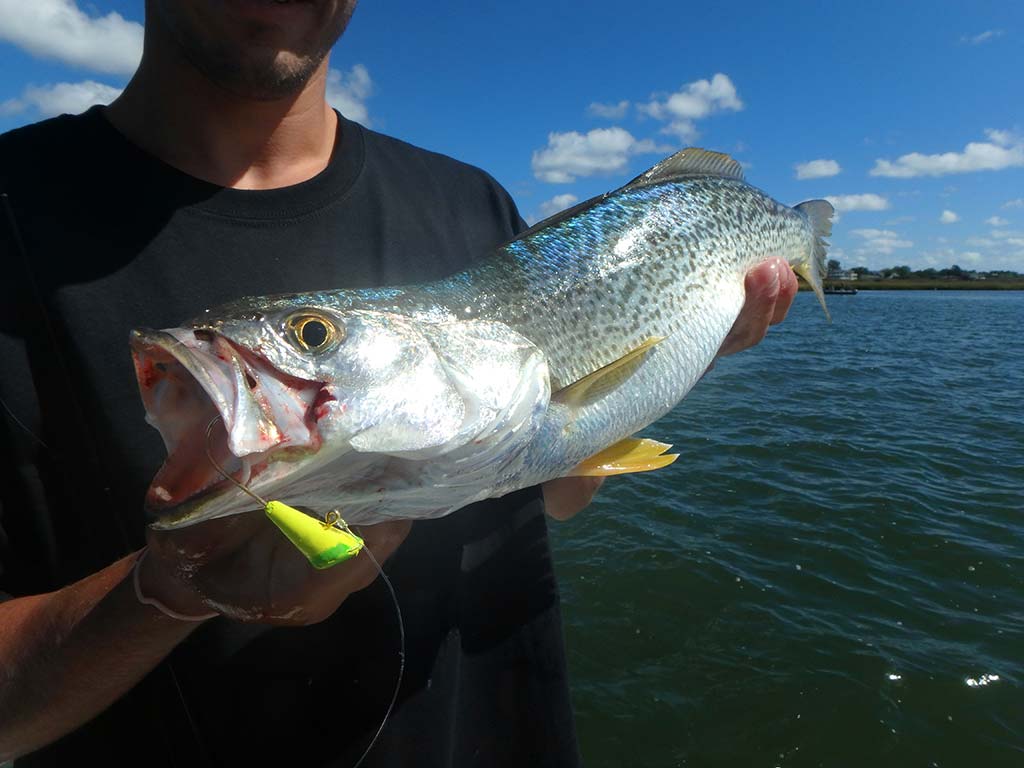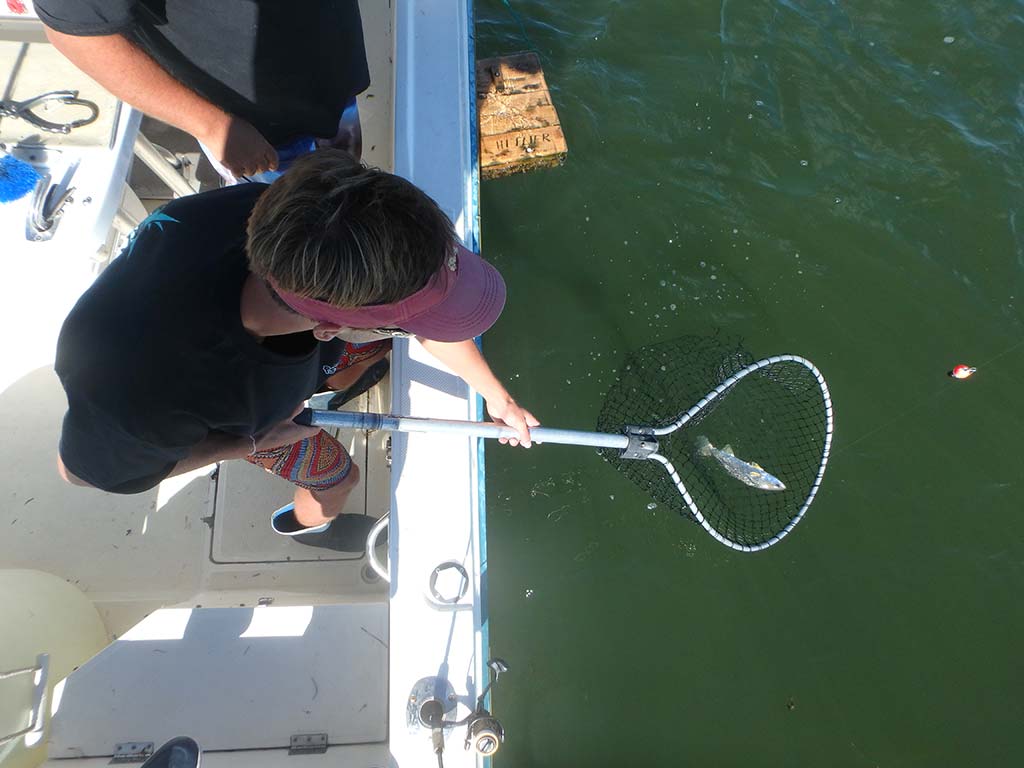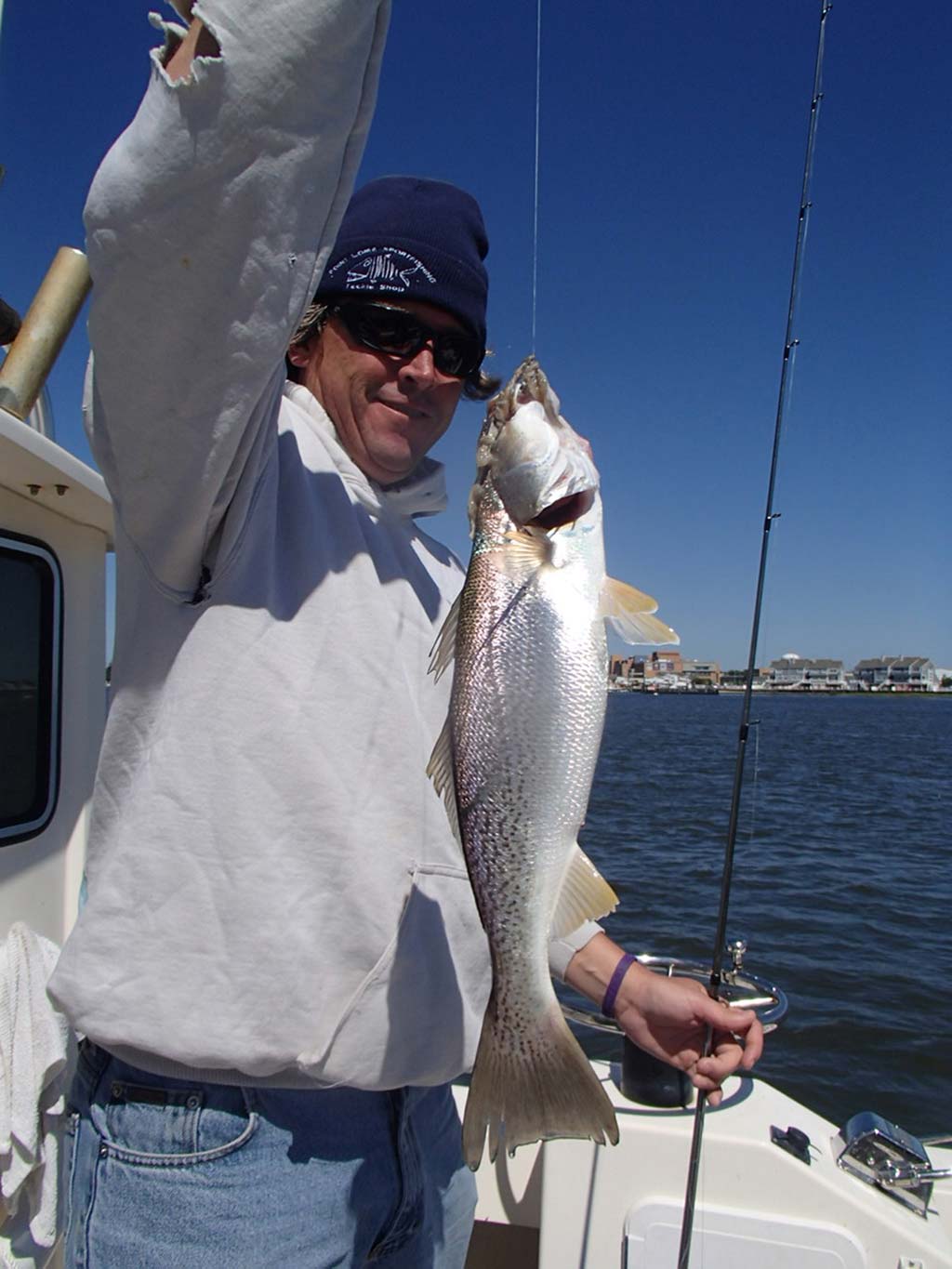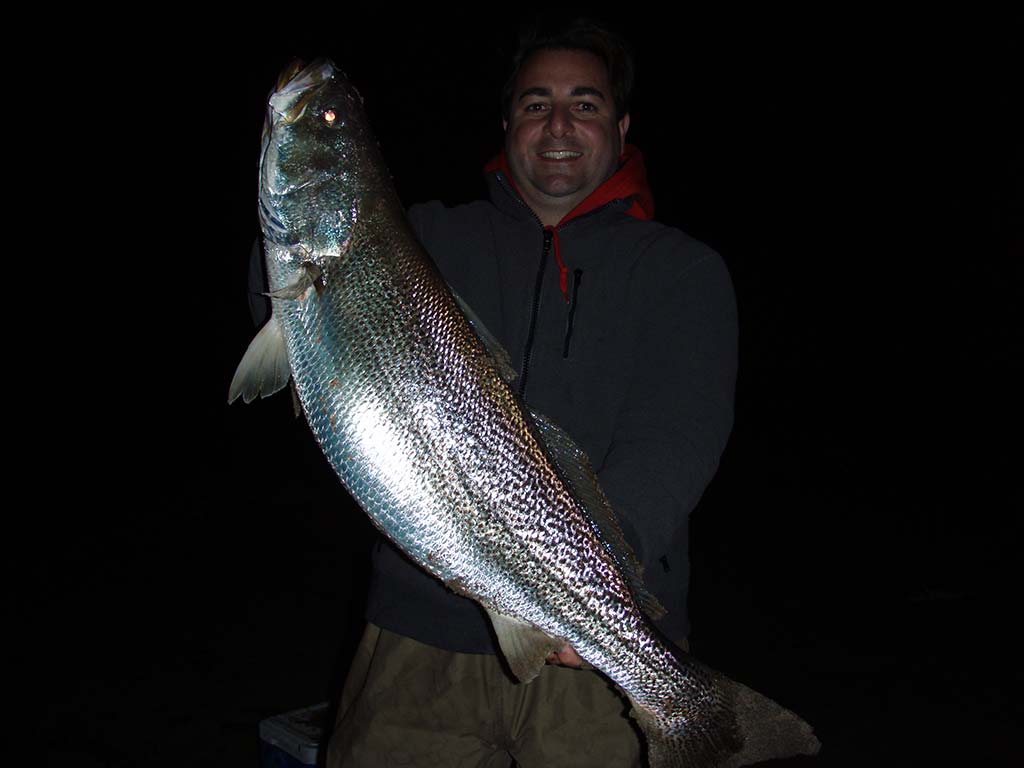
Often referred to as “unicorns” these salty trout are worth the hunt.
Weakfish, remember them? Seems like it’s been way too long that we’ve really said much about weakfish in our fishing reports around New Jersey. Their lack of presence is hotly debated with varying theories, though none scientifically proven, to explain just where the heck they have been.
In the late 1990’s I recall heading out for a morning in Barnegat Bay and having no problem tangling with a half dozen 5- to 10-pound tiderunners before sunup on soft baits, then grass shrimping hundreds of weaks in the 2- to 4-pound range all day long. The mid to late 2000s saw a marked decline in the fishery and it has not rebounded since then.
Some springs, it appears that they show up with a dozen here and there again like a long lost friend, only to fizzle out, other years you don’t even hear of one being caught. So far in 2021, there have been scattered reports up and down the Jersey Shore of fish being hooked, which may be a sign of some presence throughout the summer.
So how can you find them? Let’s lay it out.

Chasing Shadows
First and foremost, this is my opinion only, but I advocate for the release of any and all weakfish. Even though there is only a one fish bag limit at 13 inch minimum size, any weakfish caught should be released until we know the fishery is back to a normal level. Most anyone that goes out now to target weakfish will do so not with the frying pan on their mind but probably more to just to see if they can track down a ghost.
According to the Atlantic States Marine Fisheries Commission (ASMFC) which is the deliberative body of the Atlantic coastal states responsible for the conservation and management of 27 nearshore (inside 3 miles) fish species, the latest 2019 Weakfish Stock Assessment Update indicates weakfish continue to be depleted and have been since 2003. Under the reference points used by ASMFC, the stock is considered depleted when it is below the spawning stock biomass threshold of 30% (13.6 million pounds).
In 2017, the spawning stock biomass was 4.24 million pounds. While the assessment indicates some positive signs in the weakfish stock in most recent years, the stock is still well below the required threshold.
As per the ASMFC, the assessment indicates natural mortality (the rate at which fish die because of natural causes such as predation, disease and starvation) has been increasing since the early 2000s. Fishing mortality was also high during the mid- to late 2000s, and while harvest has been at low levels in recent years, the weakfish population has been experiencing very high levels of total mortality (which includes fishing mortality and natural mortality) which ASMFC says is preventing the stock from recovering.
For more information on weakfish go to the Management tab at ASMFC.org.
Let’s understand a bit about where, when and how to find weakfish. Large “tiderunner” weakfish pushing 10 pounds and over were generally known to be caught in the late spring months and usually always under the guise of dark cover of night, or the pre-dawn hours before sunrise. Weakfish aka “squeateague” primarily hang in the deeper channels of back bays, especially around confluence points where two channels spill and mix into each other. Sedge points and overhangs are also prime weakfish turf.
Come summertime, smaller spike weakfish of 8 to 12 inches seem to colonize the baywaters as they run with the tides to suck down grass shrimp, baitfish and crustaceans funneling in and out with tidal movement. Back bay docks with light illumination will also hold weakfish during the heat of the summer months. Bridge pilings and abutments offer cover for weakfish to hide and ambush prey as it funnels by, so river systems as well as canal systems can be solid weakfish hangouts.
Though a majority of fish spend most of their time in the backwater systems, the big bays in Delaware Bay and more notably Raritan Bay also harbor large weakfish as they sit tight in the deeper channels of 35 to 70 feet. In fact, the world record weakfish of 19 pounds, 12 ounces was caught by Dave Alu with the guide of Rich Swisstack in 2008 in Great Kills Harbor in Raritan Bay on a bunker head that was intended for a bass.
Come fall, weakfish enter the surfline and along the coast feeding on sand eel schools in 25 to 45 feet of water.

Noted Spots & Tactics
As strange as it may seem now, Delaware Bay – the town of Fortescue in Cumberland County in particular – was once known as the Weakfish Capital of the World. Yeah, crazy, as you’re often lucky to score a bag limit on weakfish during the year there now.
I recall fishing in the early 80s in Little Egg Harbor and witnessing 10-pound weakfish on a daily basis. Fall runs of the early 2000s along Island Beach State Park used to have 4- to 8-pound weakfish crashing within the peanut bunker and sand eel schools mixed in with the blues and bass as they blitzed. I remember one morning watching 15-pound blues beaching 5-pound weakfish as they tried to get out of the razor toothed choppers way.
Though those aforementioned spots were historical, three are still plenty of locales to try and target spiketooths. For your upcoming weakfish sorties, here are some solid Garden State bets from north to south to explore if the spiketooths do show up.
– Raritan Bay along Great Kills Harbor, tossing sandworms, bunker chunks or bloodworms in late spring. During May and June, in Flynn’s Knoll or Raritan Reach during the summer months, drifting sandworms on three-way swivel rigs during the night hours or inside the Shrewsbury and Navesink river systems around the Highlands Bridge.
– May through July, the entire Manasquan River system to be fished with light 1/4- to 3/8-ounce leadheads and pink Bubblegum Fin-s Fish in 5-3/4- or 4-inch. Focus on mid-tidal hours when flow is running hard.
– July and August, Barnegat Bay along the flats anywhere between the BB and BI Buoys and 40 marker, chumming with grass shrimp and sending out bobber slip floats with balls of shrimp on a #4 hook.
– Throughout the summer, Great Bay’s entire expanse in the ICW channels, down into Sea Isle City Ludlam’s Bay, with a major focus on Townsend’s and Corson’s Inlet areas. Toss light jigheads again with soft baits. Pink always seems to be the right color for weakfish.
– The Cape May Point jetties, a hot technique that has proven its worth already in 2021 is floating bloodworms on a size #2 hook out against the rocks.

Whether you, I, or anyone else has luck with weakfish this year is a total crapshoot. If you follow the regular weekly reports in The Fisherman and in our weekly video forecasts on YouTube you’ll know that a smattering of decent weakfish catches were “reported” through the month of May; who knows how many of the regular sharpies scored and never said a word!
But if you do follow this basic game plan, you do have a shot at catching the elusive speckled jewel of the Jersey backwaters. Remember, if you do catch one, they are fragile creatures and you might give consideration to releasing immediately. As well, do not use any treble hook lures as they will rip the paper mouth of the weakfish beyond repair.
Good luck hunting shadows!



